14 Caribbean Spots Travelers Say You Shouldn’t Miss
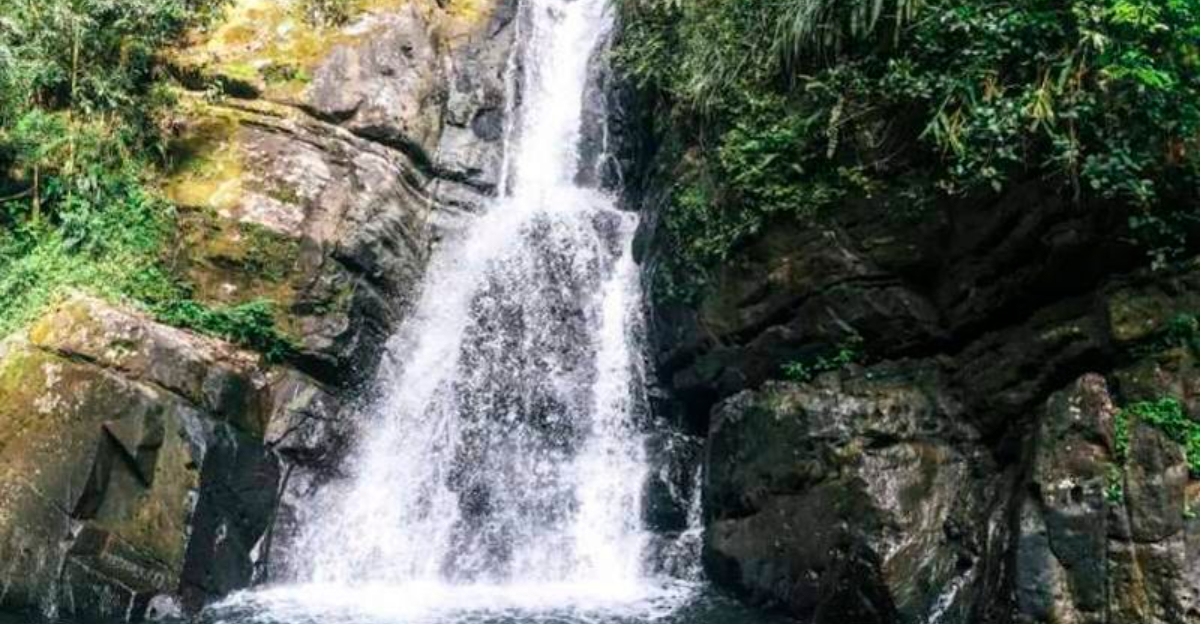
Ready to trade your daily grind for a coconut in hand and your toes in the sand? The Caribbean isn’t just one destination—it’s a kaleidoscope of islands, each with its own rhythm, flavor, and charm.
Over the years, I’ve chatted with countless seasoned travelers, and their stories helped shape this curated list of can’t-miss spots. We’re talking secret beaches only locals know about, markets bursting with color and flavor, and sunsets that might just ruin all future sunsets for you.
Whether you’re craving island adventure or a hammock nap under swaying palms, these Caribbean gems deliver the kind of magic you’ll never forget. So—where will you go first?
1. Trunk Bay, St. John

Imagine waking up to the softest white sand between your toes and crystal-clear water stretching to the horizon. Trunk Bay delivers this dream with its picture-perfect shoreline and famous underwater snorkeling trail.
The marked underwater path guides you through colorful coral formations while informative plaques explain the marine life you’re seeing. I was amazed by the rainbow of tropical fish darting around me during my visit.
Part of the Virgin Islands National Park, this protected beach maintains its pristine condition year-round. Come early morning to enjoy peaceful moments before the day-trippers arrive from nearby St. Thomas.
2. Pigeon Island National Park, St. Lucia
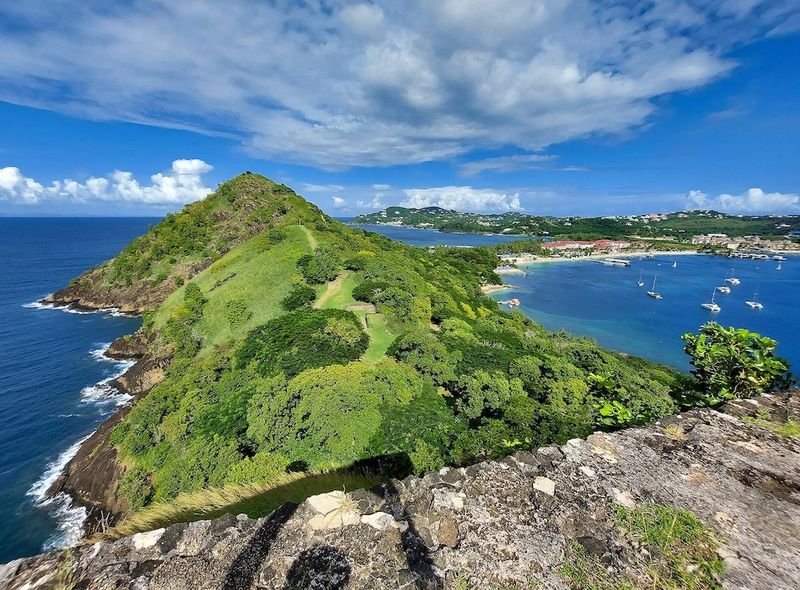
History buffs and nature lovers unite at this fascinating peninsula connected to St. Lucia’s northwestern coast. Once an actual island, Pigeon Island tells stories of colonial battles through its preserved military ruins and lookout points.
The moderate hike to Fort Rodney rewards you with breathtaking 360-degree views of the Caribbean Sea meeting the Atlantic Ocean. I could see all the way to Martinique on a clear day!
After exploring, cool off at the secluded beaches tucked into the park’s edges. This perfect blend of history, hiking, and beach relaxation makes for an unforgettable day trip from nearby Rodney Bay.
3. Arikok National Park, Aruba
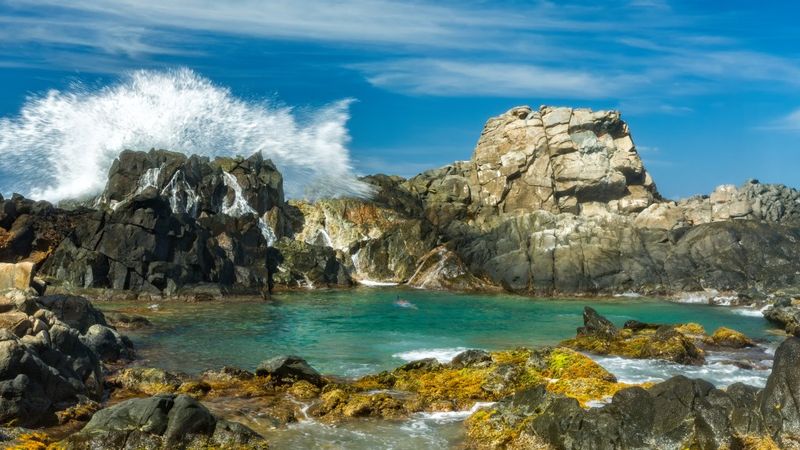
Wild and untamed, Arikok National Park showcases Aruba’s surprising desert landscape that most visitors never expect to find in the Caribbean. Covering nearly 20% of the island, this natural preserve feels worlds away from the resort-lined beaches.
Dramatic coastlines feature natural bridges and hidden caves with ancient Arawak Indian drawings. The Natural Pool, or “Conchi,” formed by volcanic stone circles, creates a perfect swimming spot surrounded by crashing waves.
Four-wheel drive is absolutely necessary to navigate the rugged terrain. Hiring a local guide enhances the experience with stories about the unique flora like the iconic divi-divi trees and strange kadushi cacti that dot the landscape.
4. Dunn’s River Falls, Jamaica
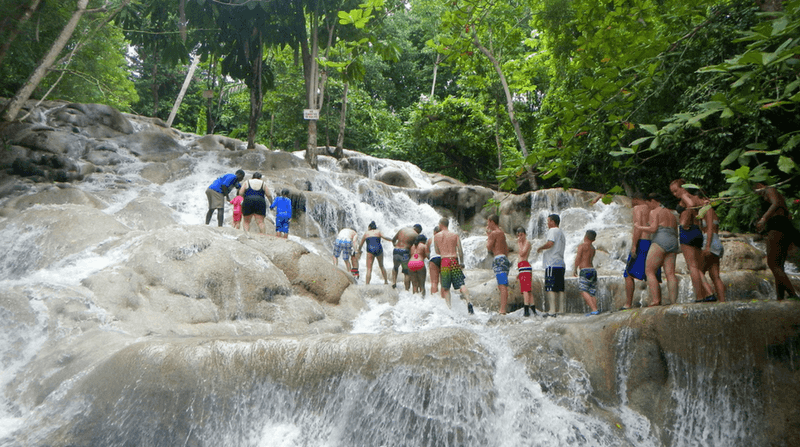
Water cascades over natural limestone steps in a breathtaking 180-foot journey from forest to sea at Jamaica’s most famous natural attraction. Dunn’s River Falls invites visitors to form human chains and climb directly up the rushing water—an exhilarating experience that connects you with nature’s raw power.
Skilled guides help you find safe footing while pointing out perfect photo spots along the way. The cool water refreshes you even on the hottest Caribbean days.
Wear water shoes with good grip and bring a waterproof camera to capture memories. Early morning visits help avoid crowds from cruise ships, giving you a more peaceful connection with this natural wonder near Ocho Rios.
5. Bioluminescent Bay, Vieques, Puerto Rico

Nothing prepares you for the magical moment when darkness falls and Mosquito Bay transforms into a sea of stars. This natural phenomenon occurs when microscopic organisms called dinoflagellates glow blue when disturbed by movement.
Kayaking through the warm waters at night creates trails of ethereal blue light with every paddle stroke. I watched in wonder as fish darted beneath my boat, leaving glowing torpedoes of light in their wake.
Vieques island hosts the brightest bio bay in the world, protected from light pollution by its remote location. Choose a moonless night for the most spectacular display, and book tours well in advance as this bucket-list experience fills up quickly.
6. The Baths, Virgin Gorda

Mother Nature’s playground awaits at The Baths, where massive granite boulders create mysterious grottoes and tidal pools along Virgin Gorda’s shoreline. These geological wonders, some as large as houses, formed millions of years ago through volcanic activity.
Winding through the narrow passages feels like exploring another world. Shafts of sunlight pierce through openings between rocks, illuminating crystal-clear pools perfect for snorkeling.
The trail through the boulders leads to Devil’s Bay, a pristine beach worth every step of the sometimes challenging path. Arrive early to experience this natural marvel before cruise ship passengers, and bring a waterproof bag for your belongings as you’ll want to swim throughout your visit.
7. Morne Trois Pitons National Park, Dominica
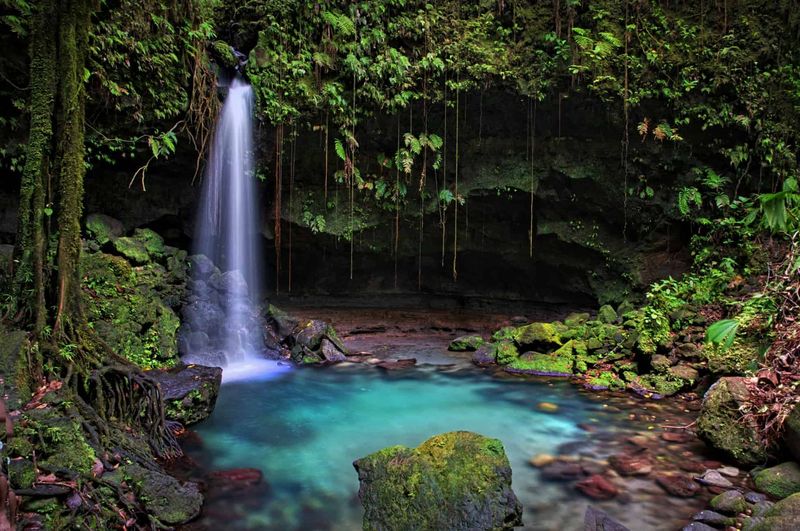
Dominica earns its nickname as “Nature Island” with this UNESCO World Heritage site showcasing the Caribbean’s wild heart. Morne Trois Pitons National Park packs an incredible variety of ecosystems into its boundaries, from rainforests to volcanic features.
The Emerald Pool lives up to its name with waters glowing an otherworldly green beneath a 40-foot waterfall. Meanwhile, the Valley of Desolation leads to Boiling Lake, the world’s second-largest hot spring, where gray clouds of steam rise mysteriously from its bubbling surface.
Hiking trails range from easy walks to challenging all-day treks requiring guides. This unspoiled wilderness represents Caribbean nature at its most powerful and reminds visitors why conservation matters so deeply in this fragile paradise.
8. Shirley Heights, Antigua

Sunday evenings transform this historic lookout point into the Caribbean’s most spectacular sunset party. Perched high above English Harbour, Shirley Heights combines panoramic views with Antigua’s famous hospitality.
Steel drum bands and reggae musicians create the soundtrack as the sun dips below the horizon, painting the sky in dramatic oranges and purples. Local vendors serve up sizzling barbecue and potent rum punch to complete the sensory experience.
The restored military complex tells stories of Antigua’s colonial past through its well-preserved buildings and cannons. Even on non-party days, the sweeping views of yachts dotting the harbor below make this lookout worth the winding drive up from Nelson’s Dockyard.
9. Tobago Cays Marine Park, St. Vincent & The Grenadines
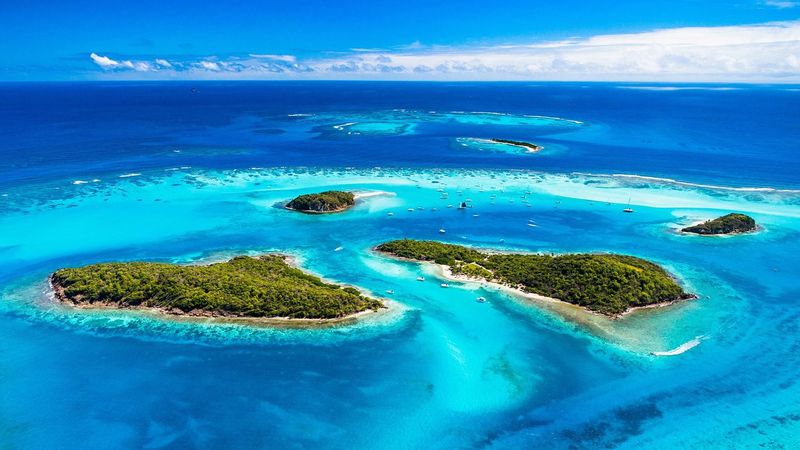
Paradise found! This protected archipelago of five uninhabited islands surrounded by a horseshoe-shaped coral reef delivers the ultimate Caribbean fantasy. Crystal-clear waters in every shade of blue reveal vibrant coral gardens teeming with tropical fish.
Green turtles glide gracefully through designated sanctuary areas, often swimming alongside snorkelers. I spent hours floating above these gentle creatures, watching them graze on seagrass beds.
Accessible only by boat, the Tobago Cays’ remote location preserves their pristine condition. Charter sailboats can anchor overnight, allowing lucky visitors to experience spectacular stargazing and sunrise moments that feel straight from a movie set—Pirates of the Caribbean was actually filmed here!
10. Pig Beach, Exuma, Bahamas

Where else can you swim alongside friendly pigs paddling through crystal-clear Caribbean waters? Big Major Cay (nicknamed Pig Beach) hosts this unexpected animal encounter that’s become one of the Bahamas’ most photographed attractions.
These surprisingly good swimmers paddle out to greet approaching boats, hoping for treats. The origin stories vary—some say sailors left them, others claim they survived a shipwreck—but everyone agrees they’ve created a uniquely Bahamian experience.
Beyond the pigs, Exuma’s waters showcase every imaginable shade of blue against pristine sandbars. Tour boats typically combine Pig Beach with stops at nearby attractions like Thunderball Grotto and iguana-inhabited beaches, creating an unforgettable day of island-hopping adventures.
11. Willemstad, Curaçao
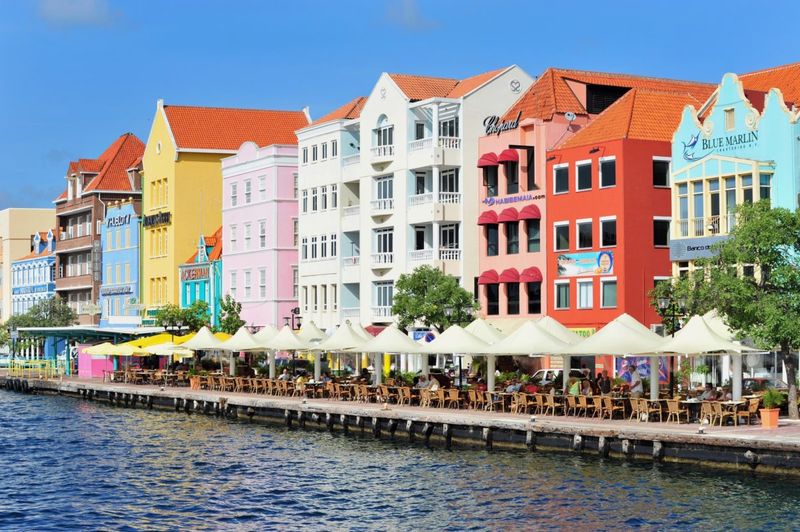
Dutch colonial architecture painted in vibrant Caribbean colors creates a fairytale setting in Curaçao’s capital city. The UNESCO-protected historic district spans both sides of St. Anna Bay, connected by the famous Queen Emma floating bridge.
Handelskade’s row of colorful buildings creates the iconic postcard image, best viewed while sipping a Blue Curaçao cocktail at a waterfront café. Behind these picturesque facades, narrow alleyways reveal hidden courtyards housing boutiques, galleries, and restaurants.
Floating markets bring Venezuelan vendors selling fresh fruits and vegetables from their boats along the canal. This unique blend of European, Caribbean, and South American influences makes Willemstad much more than just a pretty face—it’s a living museum where diverse cultures continue to shape island life.
12. Cockpit Country, Jamaica
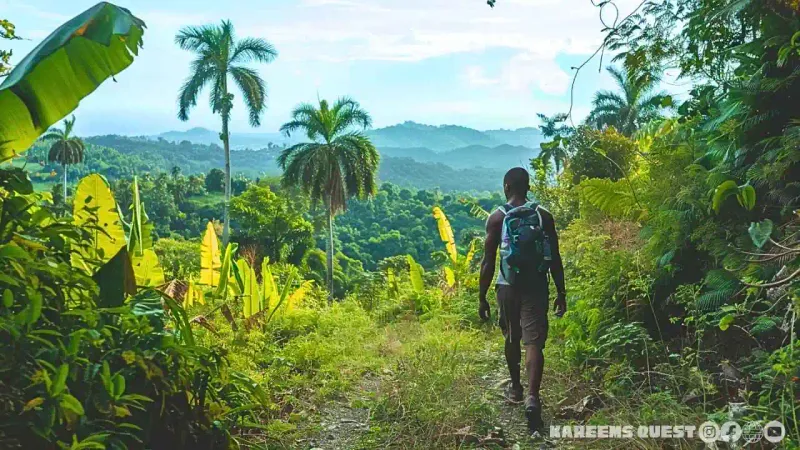
Adventure seekers discover Jamaica’s wild side in this remote interior region far from beach resorts. Cockpit Country’s distinctive landscape features thousands of limestone sinkholes creating a “Swiss cheese” terrain that once provided the perfect hideout for Maroons—escaped slaves who established free communities.
Hiking through dense forests reveals rare birds found nowhere else on Earth. Local guides from Maroon villages share ancestral knowledge about medicinal plants and freedom-fighting history that shaped Jamaica’s identity.
Windsor Cave houses thousands of bats and underground rivers, while Accompong Town welcomes visitors to learn about living Maroon culture. This challenging but rewarding destination reveals Jamaica’s natural wonders and resistance heritage that many tourists never experience beyond the coastal hotspots.
13. El Yunque National Forest, Puerto Rico
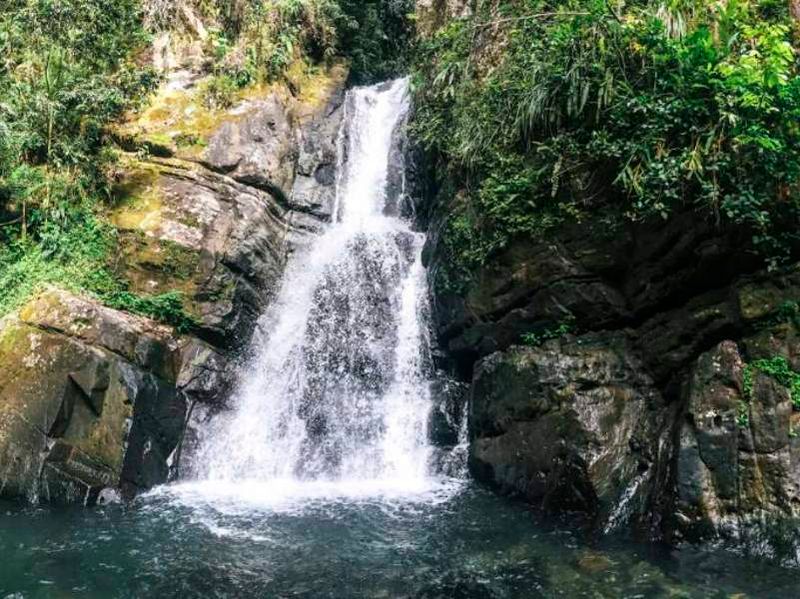
Misty mountaintops and thundering waterfalls await in the only tropical rainforest in the U.S. National Forest system. El Yunque blankets eastern Puerto Rico’s mountains with lush vegetation that receives over 200 inches of rainfall annually.
La Coca Falls cascades dramatically over massive rocks right beside the main road, while La Mina Falls rewards hikers with a refreshing natural pool perfect for swimming. The forest’s compact size makes it possible to experience diverse ecosystems in a single day trip from San Juan.
Listen for the distinctive call of the coquí frog, Puerto Rico’s beloved symbol, especially at dusk. Climate-controlled cloud forests at higher elevations harbor rare plants and birds found nowhere else, including the endangered Puerto Rican parrot that conservationists work tirelessly to protect.
14. Saba Marine Park, Saba

Scuba divers whisper reverently about this tiny Dutch Caribbean island rising dramatically from the sea. Saba Marine Park encircles the entire island with protected underwater pinnacles, seamounts, and healthy coral reefs that rank among the Caribbean’s best-preserved marine environments.
Dramatic underwater formations mirror the island’s volcanic topography above water. Sites like “Eye of the Needle” feature narrow pinnacles rising from the depths, while shallow patches showcase colorful coral gardens teeming with tropical fish.
Strict conservation measures since 1987 have preserved this underwater wonderland. Limited tourism infrastructure means fewer crowds than popular diving destinations, but reaching Saba requires extra effort—typically a ferry or small plane landing on one of the world’s shortest commercial runways, adding to the adventure!
